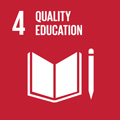- Docente: Filippo Lo Piccolo
- Credits: 6
- SSD: SECS-P/08
- Language: Italian
- Teaching Mode: In-person learning (entirely or partially)
- Campus: Ravenna
-
Corso:
Second cycle degree programme (LM) in
History, preservation and enhancement of artistic and archaeological heritage and landscape (cod. 9218)
Also valid for Second cycle degree programme (LM) in Library and Archive Science (cod. 6740)
-
from Mar 23, 2026 to May 08, 2026
Learning outcomes
The course aims to impart basic knowledge of the importance of cultural heritage from a revenue-generating perspective and the opportunities offered by the social context in which those working in the sector operate to launch organized businesses. It is thus clear that cultural heritage is a vehicle not only for knowledge but also for economic development. Upon completion of the course, students will possess the knowledge and technical and operational tools to consider cultural heritage as an economic asset and, with appropriate knowledge, will be able to launch companies and businesses that can operate alongside the public management of cultural heritage.
Course contents
The course will cover the following topics:
- The specific nature of the cultural sector. We will consider the concept of the cultural sector and its evolution over time, presenting analytical approaches to the impact of technology. We will outline the main economic characteristics of cultural enterprises, cultural industries, and creative enterprises. After considering some current legislation, we will address the role of state intervention in cultural financing.
- The scope of cultural enterprises, cultural and creative industries. We will discuss the theoretical framework and the specific economic functions performed by the various actors in the system, all within a comprehensive framework.
- The importance of culture and local development, analyzing the territorial dimension of culture and the phenomenon of cultural tourism.
- The dynamics of cultural enterprises from the perspective of their management tools. We will introduce the concepts of strategic planning, with particular reference to the analysis of cultural demand and audience development activities. We will discuss project management in the cultural field. We will consider the key aspects of institutional communication in the form of annual financial statements. Finally, we will define performance indicators and the main methods for evaluating economic impact.
- Analysis of the main issues regarding cultural sector financing, particularly the economic and financial sustainability of cultural enterprises. We will consider key aspects of managing cultural service offerings, with reference to possible funding sources and the role of volunteers.
Readings/Bibliography
Cerquetti, Montella, Economia e gestione dei beni culturali e dei musei, McGrawHill 2024
Management Per L'impresa Culturale di L. Solima, Carocci Editore, 2018
Teaching methods
Frontal lesson
Assessment methods
A written exam designed to assess the student's level of preparation on the topics covered.
For the purposes of determining the overall level of preparation associated with the scores obtained, the following is specified:
· Range 18-23: sufficient preparation, but relating to a limited number of the subjects covered by the course program;
· Range 24-27: adequate preparation but with gaps in the content covered by the course program;
· Range 28-30: thorough mastery of all the subjects covered by the course program;
· 30L: excellent knowledge of the content covered by the course program.
Teaching tools
Additional teaching materials will be made available on the Virtuale Platform during the course.
Office hours
See the website of Filippo Lo Piccolo
SDGs


This teaching activity contributes to the achievement of the Sustainable Development Goals of the UN 2030 Agenda.
